- Home
- Keith Douglass
Nuke Zone c-11 Page 2
Nuke Zone c-11 Read online
Page 2
“That’s not rightnot at that altitude. Unless it’s a fishing boat with-“
“Sir. With all due respect, you’re letting your conclusion drive your analysis.” Carey stabbed a finger at the display. “You’ve got a contact radiating commercial IFF, going too fast, displaying a radar it shouldn’t have, and now bouncing back and forth between five hundred feet and eight thousand.”
Carey’s voice took on an urgent note. “Sir, you’d better get the TAO in here. Now.”
“What if it’s just a commercial flight after all? Or a computer-processing glitch?” Skeeter replied uneasily. As a junior officer stashed on board the flagship, he’d been pressed into duty as the Combat Direction Center TAO only because the ship was in peacetime cruising mode. Nobody was expecting anything to go wrong, not in the familiar confines of the Aegean Sea and just off the coast of a friendly nation. Besides, the admiral’s Chief of Staff had expressed full confidence in Skeeter and told him it was an opportunity. “What does the Aegis say?”
A flicker of movement on the large-screen display drew their eyes toward it. The Aegis response was clearthe blip had been redesignated as an unknown, potentially hostile contact.
“I know Lieutenant Commander Boney,” Carey said. “If you call him and wake him up for no reason, he’s not going to be pissed. He expects ithell, if he’d known you’d hesitate to do it, he wouldn’t have left you here alone on watch, sir!”
Skeeter reached for the telephone and punched in the four-digit code that would ring the TAO’s stateroom. He stared at Carey as the phone rang twice, then quickly briefed the Tactical Action Officer on the scenario.
Color drained from his face as he listened to the response. He slammed the receiver down and turned to Carey. “You and your counterpart on the cruiser better be right. Lieutenant Commander Boney’s on his way down here, and he told me to ring the captain.”
Carey nodded, immensely relieved. “Better safe than sorry, sir. Always.”
0442 Local
Tactical Flag Command Center (TFCC)
USS Jefferson (CVN-74)
TFCC was one of the smallest compartments on board the supercarrier, but it was the fusion center for every sensor on every platform assigned to Carrier Battle Group 14. Radar, electromagnetic, and a variety of other sophisticated detection and countermeasures systems fed their electronic data into the processing center. Tiny waverings in the electromagnetic spectrum, fuzzy contacts that might have been sea clutter or actual contacts, were correlated with national sensor data from satellites and other top-secret assets to produce a chillingly accurate bird’s-eye view of the airspace and sea for five hundred miles around the carrier. A satellite data link with the Sixth Fleet flagship extended her range to well within the Aegean Sea.
The compartment was dimly lit, red lights glowing softly from the overhead while a giant blue large-screen display covered the far end. Two tactical consoles were positioned in front of the screen, each with its own automated status board, keyboard, trackball, and associated communications circuitry. The Flag Tactical Operations Officer occupied the right-hand one, while his assistant sat in the left. Both wore headsets linking them to the command circuit, and a dial-up switch in front of them allowed them to change to other circuits as necessary.
At the moment, both were studying the large-screen display. Just seconds before, the “unknown, possibly hostile” designation had flashed before them as the Aegis cruiser had revised her opinion on the identity of the air contact. Lieutenant Commander “Gator” Cummings, an F-14 Radar Intercept Officer, or RIO, slewed his cursor over to capture the offending blip. His status display indicated the contact had been designated a COI (contact of interest) by La Salle, now loitering two hundred miles to the northeast.
“Raw video,” he muttered. “That’s what I’d rather see than this. If I could see just exactly what the radar is painting, I’d know-“
“Just what you know now,” his assistant finished tartly. “Gator, you RIOs always believe you’ve got the only calibrated set of eyeballs in this Navy. Don’t you figure those operations specialists on the cruiser know their jobs?”
“Sure they do, but I know mine even better.”
“Well. What do you want to do about it?”
Gator stared at the symbology on the tactical screen. It was tracking southwest, headed directly toward the Sixth Fleet flagship. Behind it, a shadow trace indicated its previous path. From its track history, it appeared to have left Ankara and been detected as it went feet-wet off the coast. “Could be a commercial airtime’s wrong, but it might be a charter flight.” He changed his mind as soon as he said the words. “Or something else.”
The other officer, an E2C Hawkeye pilot, nodded. “I don’t like this.”
“Anything from Intel?” Gator asked.
“Let’s find out.” The pilot picked up the telephone and punched the numbers. He spoke a few short sentences in the receiver, then hung up. “Commander Busby’s on his way down right now. He sounded worried.”
“My sentiments exactly.”
Gator picked up the Batphone located to his right. “Get the Alert 30 Tomcats rolling. I’ll brief the admiral.”
0444 Local
MiG 42
One hundred miles. It’s time. Still, he hesitated.
Why?
Was it the enormity of the act he was about to commit? Or simply lingering doubts about the viability of the entire operation?
He shook his head, pushing the questions that had plagued him for the last five months away. There was more to this plan, more than he’d ever been told or would ever know. It was the old Soviet waythat he know only the small portion that was required for the successful execution of his mission, not the broader strategic implications. He took a deep breath, focused on the radar screen, and toggled the weapons-select switch on his stick. Not that it made much differencehe carried only one missile, and an odd variant at that.
He punched the button on top of the stick, releasing the weapon from its hard-point station on his right wing. The MiG heeled, suddenly unbalanced by the loss of six hundred pounds ofof what?
As he broke off from the approach and heeled back in a tight turn toward Turkey, he felt the question grow more insistent in his mind. What had he just fired?
And why?
0445 Local
Flight Deck
USS Jefferson
Minutes after the TAO’s wake-up call, the flight deck was teeming with a rainbow of jerseys. Two decks down, the Alert 30 Tomcat crews waiting in their Ready Room were slipping into their ejection harnesses, double-checking kneeboard data, and trying to figure out why the hell they were scrambling.
The yellow-shirted flight-deck control personnel swarmed over the Alert 30 Tomcats, conducting final preflight checks and readying the aircraft for their crews. Inside the carrier, the duty tower crew stampeded up eight decks to Pri-Fly, the glassed-in control tower on the inboard side of the island. CAG, although his presence was technically not required in the tower, rousted himself out of his rack and hastily tossed on his yellow jersey over his khaki pants.
In TFCC, an atmosphere of controlled chaos was developing. Admiral Edward Everett “Batman” Wayne, commander of Carrier Battle Group 14, strode into TFCC. The admiral’s cabin was located on the same deck, just thirty feet away.
“Good morning, Admiral,” Gator said crisply. He followed his greeting with a concise summary of the contact’s track history. “I’m having them spin up the Alert 30 aircraftjust to be on the safe side. If it is trouble, though, we’re going to be too late to do any good.”
Admiral Wayne nodded. “Good thinking. Better safe than sorry. We’re too near our old hot zones to take anything for granted at this point.”
Batman stifled a yawn as he slipped into his elevated brown command chair. “What does Sixth Fleet think it is?”
“They’re not talking yet, Admiral,” Gator answered. “Based on the traffic and Link data, they’re treating th
is as a threat.”
Batman shook his head. “They’ve got the Aegis with them. An aggressive little bastard, from the looks of his contact designations. I like that in a cruiser. If this contact makes trouble, the Aegis ought to be able to deal with it.”
“Shiloh has a sharp crew,” Gator agreed. “I suppose I could have let them handle it alone, but-“
Batman waved off his suggestion. “Always better to have more firepower than not enough. It’s probably just a civilian aircraft off track with a misassociation of the electromagnetic signal. Still, you did the right thing.”
Gator nodded, slightly relieved in spite of himself to find out that the admiral agreed.
Batman turned to the Intelligence Officer lurking in one corner of TFCC. “Anything to add?”
“No, sir.” Commander “Lab Rat” Busby looked slightly chagrined. “Nothing. But the absence of data doesn’t mean there’s nothing to worry aboutjust that we don’t know about it if there is.”
Batman studied Busby for a moment. A strong officer, a superb intelligence specialist. But if ever an officer had an appropriate call sign, it was Commander Busby. Large blue eyes behind steel-rimmed frames, close-clipped blond hair so light as to be invisible, pink complexionwhoever had hung that name on him in his first assignment had nailed him cold appearance-wise. But the aggressive, scalpel-sharp mind housed beneath his unprepossessing exterior belied the meek nickname.
“Better safe than sorry,” Batman said. He turned back to Gator. “Tell the Air Boss to get those Tomcats up now.
0447 Local
MiG 42
The fog enveloped him again, closing around the canopy like a welcoming blanket. Stealth technology might hide him from radars, but the enveloping low clouds made him feel safe, as well as preventing visual contact.
As soon as he’d started executing his hard turn toward Turkey, Yuri had slammed the throttles full forward on the Foxhound, kicking the light aircraft up to Mach 2.3. They’d factored it in, this mad dash for home, during the initial mission calculations. He should have enough fueljust barely.
Thirty miles behind him, the missile he’d just launched was still heading for the La Salle. He watched the digital time counter on his console, counting down until detonation. His mission planner had been specific about run time and distance at launch. Moreover, he’d harped incessantly on the necessity for executing as much of the mission as possible at a bare five hundred feet above the hungry sea below him. Yuri had wondered about it at the time, wondered even more now, but was not about to disobey his orders.
One more hour and he’d be back over the Crimean Peninsula, having made a circuitous route again over Turkey cloaked in his stealth technology.
One hour, if nothing went wrong.
0448 Local
Combat Direction Center
USS Shiloh
“Oh, Jesus, we’ve got separation. Missile separation.”
The operations specialist’s voice went high and wavering, then dropped immediately back down into a more controlled register. “TAO, incoming Vampire.”
The young lieutenant on watch felt the blood draining out of his face.
How had the situation gone to shit so quickly?
Sure, he’d designated the contact unknown and possibly hostile, but that was standard target-identification protocol. You don’t know what it is, something looks odd about it, you call it a possible hostile. It was the Aegis way. The captain had sounded drowsily satisfied when he’d reported it to him, evidently rousing from a sound sleep.
What in the hell?
The symbology for target-fire-control designation popped into being on his screen, and he slewed his chair around to stare at the weapons technician manning the fire-control console. It was happening fast, too fast. There wasn’t time to-“Sir, sir! Request weapons-free authorization.”
The voice of the chief manning the weapons fire-control console was firm. “Lieutenant, I need permission now to make certain we have enough range to catch it.”
A cold calm settled over the young lieutenant. This was it, the moment he’d trained for, the moment they’d memorized and anticipated and dreaded in equal proportions. This was why he was the Tactical Action Officerthe captain trusted his judgment enough to give him complete control of the awesome weapons inventory that his ship carried. If he froze now, it would be more than a black mark on his fitness report.
“Weapons free.”
One small part of his mind was pleased to note that his voice sounded steady and professional.
Seconds later, the cruiser shuddered as an SM2 surface-to-air missile exploded out of the vertical-launch-system tube and arced away from the cruiser. The noise was overwhelming, almost drowning out the insistent bonging of the General Quarters alarm. The TAO could hear people moving around CDC, the General Quarters crew pounding down the passageways and into the compartment located on the third deck of the ship, taking in the tactical situation at a glance and starting turnover with their on-watch counterparts.
He heard the cacophony, but it didn’t register. His eyes, his mind, his entire being was fixed on the blue symbol arcing away from his ship and toward the incoming missile. “Fire two,” he ordered.
0449 Local
TFCC
USS Jefferson
Aside from a few whispered oaths, TFCC was silent. Batman stared at the SM2 missile symbology with its long blue speed leader pointing out in front of it. The incoming missile carried the same symbol with the same long speed leader, but was colored in red. The tips of the two speed leaders were already intersecting, as though they were some obscene beginning to a game of tic-tac-toe.
“Flight line manned and ready,” Gator said quietly. “Estimate five minutes until Tomcat launch.”
“Make it three minutes,” Batman answered. “I think we’re going to need them.”
0450 Local
Vampire One
Thirty Miles North of USS La Salle
The Sunburn missile inbound on the USS La Salle was a one-of-a-kind variant. Its internal mechanisms and warhead were adapted from a sea-launched version of one of the United States Navy’s most dangerous threatsa tactical nuclear warhead. While American technology was more than adequate to supply such a weapon to U.S. forces, American doctrine forbade its use, even though Ukrainian combat doctrine specifically dictated the use of tactical nuclear weapons at the earliest possible point in any decisive battle.
Traveling at just under Mach 3, the missile tracked along a line of bearing dictated by its maneuvering circuits. After one minute of flight, its final-approach radar activated, illuminated the water below it, and spotted its target off on the horizon. It made two minor course corrections at its current altitude before descending to two thousand feet and continuing on its trajectory.
Had Yuri Kursk known what tactics were embedded in the pathways of the warhead’s electronic-control mechanism, he would have had even more reason to be concerned about his mission. Not for the strike on the American battle group, but for his own odds of escaping unscathed.
Thirty miles from the USS La Salle, the missile detonated. The warhead’s explosion punched through the steel alloy casing, the intense heat of the burgeoning nuclear explosion vaporizing the metal into a thin layer of molecules that would ride outward on the fireball’s leading wave.
The after part of the missile disintegrated microseconds later. There were no intact portions of it to form the deadly shrapnel that accompanies most missile detonations, but it was not necessary. Even thirty miles from the carrier, the missile was close enough to inflict the damage intended.
The EMPelectromagnetic pulsewas far more destructive to the ships in the vicinity than the relatively small blast effect the missile produced. It killed silently, without warning, and its target was not the human beings inhabiting USS La Salle, nor the structural elements of the ship, but the delicate electronics housed within.
0450 Local
Starboard Lookout Station
The starboard lookout had just begun his slow, methodical track toward the bow of the ship when the missile exploded. His involuntary reflexes took overhis eyelids slammed shut, and a piercing scream ripped from his throat. He dropped the binoculars from his eyes and plastered his hands over his face. Pain lanced through his eyes and back into his brain, a thin silver needle of agony. He dropped to his knees, not feeling the impact of soft tissue on the hard metal deck. He could hear the screams of the others on the bridge faintly, as though coming from a long distance away. But the pain, the all-encompassing pain, ate every shred of reality other than the lancing agony boiling in his brain. He rolled over onto his side and curled up on the bridge wing, still screaming. His eyes were wide open, tears flooding down his face, and completely unseeing. The nuclear flash had blinded him.
0450 Local
Combat Direction Center
USS La Salle
“Holy shit, itwhat the hell?” Skeeter’s question transformed itself into a shout as the screen in front of him lit up with an unholy brilliance. Something on the port side of the compartment snapped out an angry, electrical sound.
Every light in the compartment except for the emergency battle lanterns went dark. Skeeter jumped up, ripped the headset off his ears, and took one step back. There was only one type of missile that would cause that type of damage to a modern battleship without a concussive explosion that would have rocked the deck that was so steady under his feet. Only one.
A tactical nuclear explosion.
The ship was oddly quiet, the all-pervasive electronic hum that normally permeated every compartment silenced permanently. From the corridor outside, he could hear feet pounding down the passageways as sailors raced for their damage-control positions, their General Quarters stations, and the myriad other underway positions that the ship assumed when it was fighting for its life.

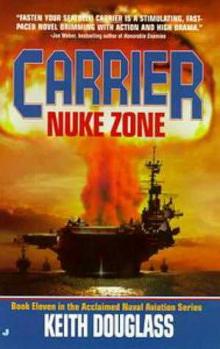 Nuke Zone c-11
Nuke Zone c-11 Seal Team Seven 6 - Battleground
Seal Team Seven 6 - Battleground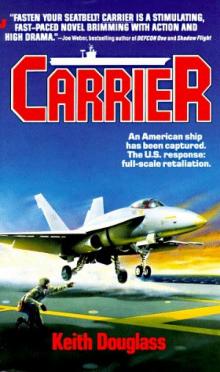 Carrier c-1
Carrier c-1 Island Warriors c-18
Island Warriors c-18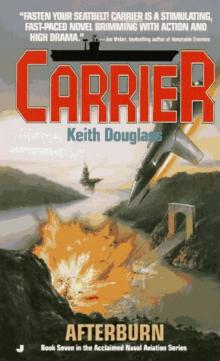 Afterburn c-7
Afterburn c-7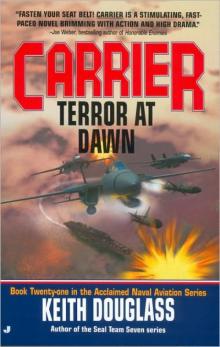 Terror At Dawn c-21
Terror At Dawn c-21 Specter sts-2
Specter sts-2 Joint Operations c-16
Joint Operations c-16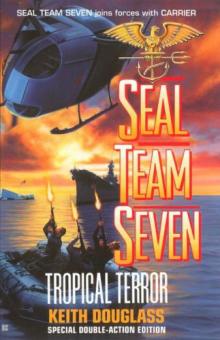 Tropical Terror sts-12
Tropical Terror sts-12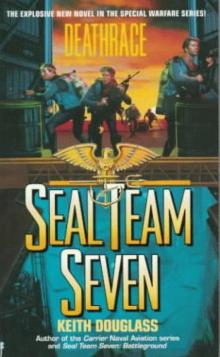 Seal Team Seven 7 - Deathrace
Seal Team Seven 7 - Deathrace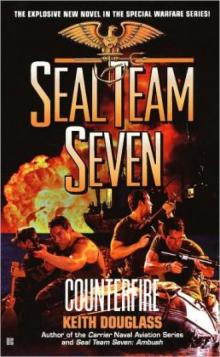 Counterfire sts-16
Counterfire sts-16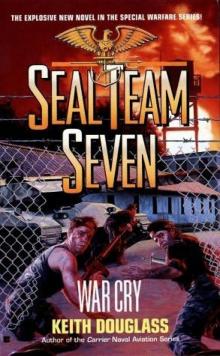 War Cry sts-9
War Cry sts-9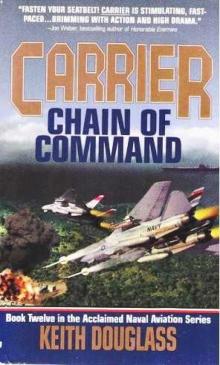 Chain of Command c-12
Chain of Command c-12 Brink of War c-13
Brink of War c-13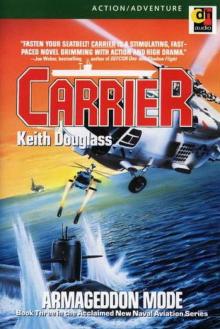 Armageddon Mode c-3
Armageddon Mode c-3 Arsenal c-10
Arsenal c-10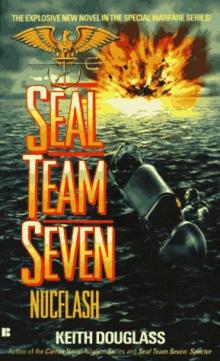 Nucflash sts-3
Nucflash sts-3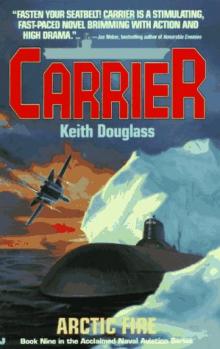 Arctic Fire c-9
Arctic Fire c-9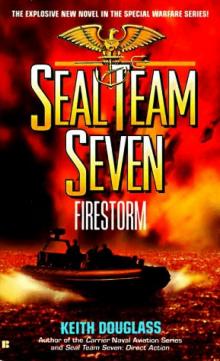 Firestorm sts-5
Firestorm sts-5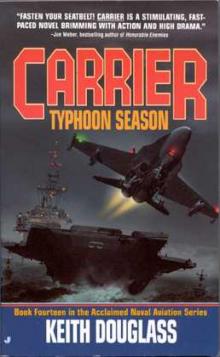 Typhoon Season c-14
Typhoon Season c-14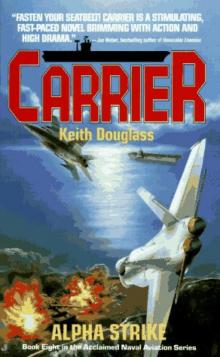 Alpha Strike c-8
Alpha Strike c-8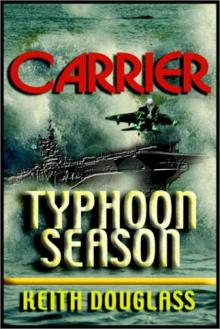 Carrier 14 - TYPHOON SEASON
Carrier 14 - TYPHOON SEASON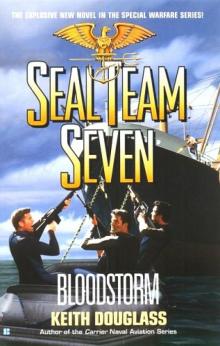 Bloodstorm sts-13
Bloodstorm sts-13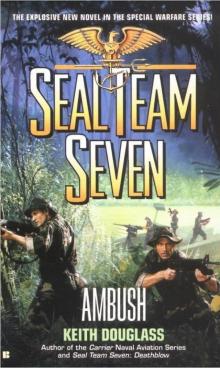 Ambush sts-15
Ambush sts-15 First Strike c-19
First Strike c-19 Flame Out c-4
Flame Out c-4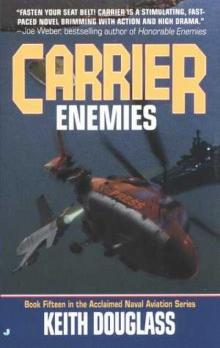 Enemies c-15
Enemies c-15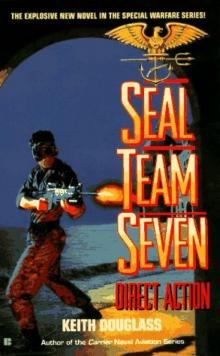 Seal Team Seven 04 - Direct Action
Seal Team Seven 04 - Direct Action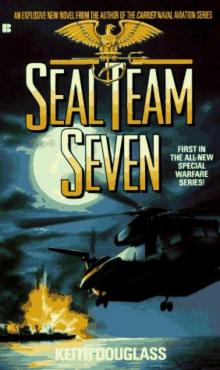 Seal Team Seven 01 - Seal Team Seven
Seal Team Seven 01 - Seal Team Seven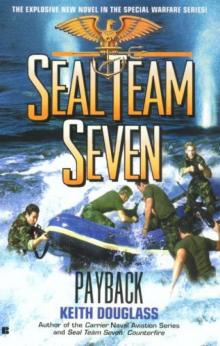 Payback sts-17
Payback sts-17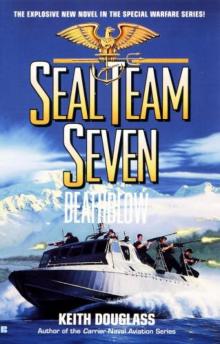 Death Blow sts-14
Death Blow sts-14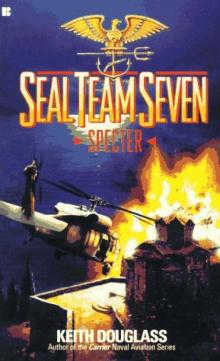 Seal Team Seven 02 - Spector
Seal Team Seven 02 - Spector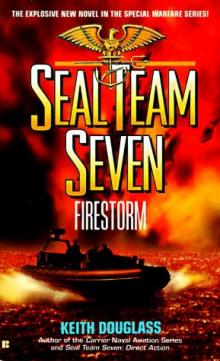 Seal Team Seven 5 - Firestorm
Seal Team Seven 5 - Firestorm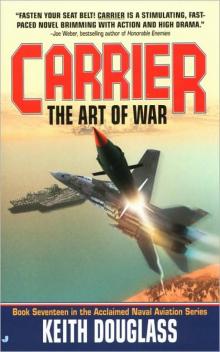 The Art of War c-17
The Art of War c-17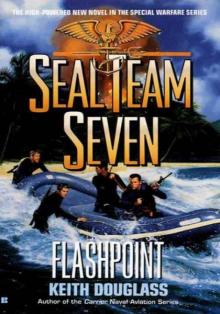 Flashpoint sts-11
Flashpoint sts-11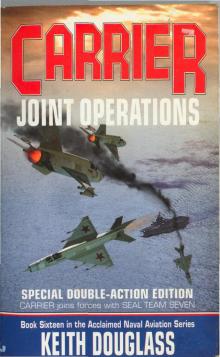 Carrier - Joint Operation Book 16
Carrier - Joint Operation Book 16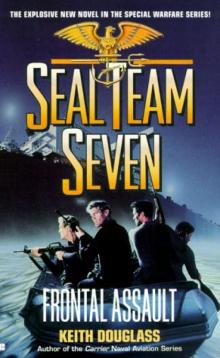 Frontal Assault sts-10
Frontal Assault sts-10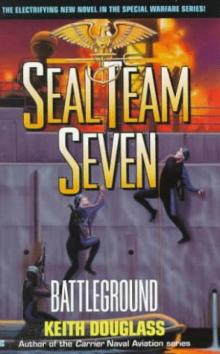 Battleground sts-6
Battleground sts-6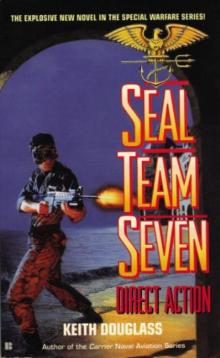 Direct Action sts-4
Direct Action sts-4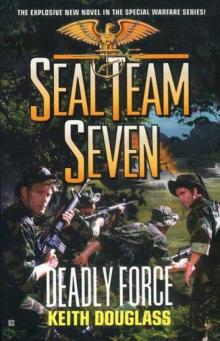 Deadly Force sts-18
Deadly Force sts-18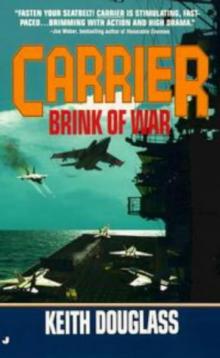 Carrier 13 - Brink of War
Carrier 13 - Brink of War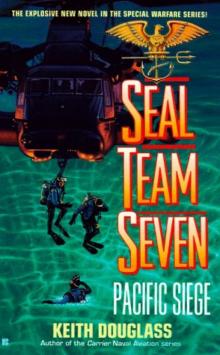 Pacific Siege sts-8
Pacific Siege sts-8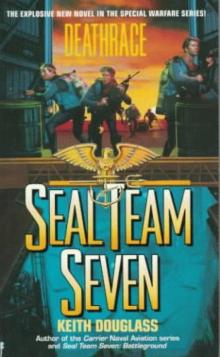 Deathrace sts-7
Deathrace sts-7